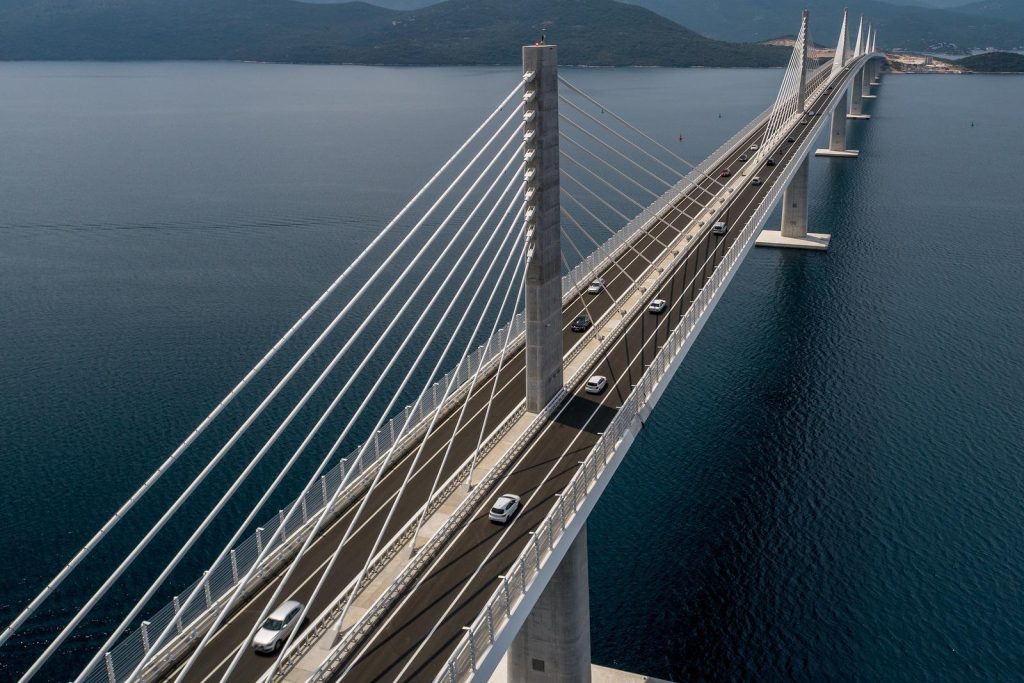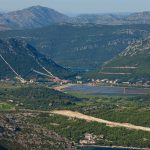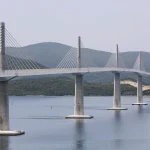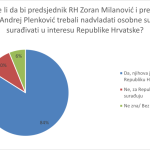A famous proverb says, “Donkeys will not cross the bridge,” but Joško Antunović’s donkeys from Kuna Pelješka will cross the Pelješac Bridge. They will go to competitions and exhibitions throughout Croatia after many years since driving cattle through the Neum corridor was forbidden. Thus, donkey trips became less frequent and were made exclusively by the Ploče-Trpanj ferry.
“We can hardly wait for this bridge; they will certainly cross it,” Antunović told Jutarnji List and added: “This is the last round of hay I will drive on the Ploče-Trpanj ferry. Unfortunately, hay cannot be transported via Neum; the paperwork is complicated, so we go by ferry, but it is too expensive.”
Joško Antunović and many other residents in the area are thrilled about the Pelješac Bridge, and they will be even happier when the Ston bypass and the Ston bridge are completed. Those ten kilometers will complete the road connection project in southern Croatia.
The Pelješac Bridge stole the glory from the access roads, bridges, viaducts, and tunnels on which no less significant construction works with three bridges, two viaducts, and four tunnels were carried out and are still ongoing. In addition, two viewpoints and crossings for agricultural machines for the local population were also built. Twenty-five kilometers of access roads have been completed, and another smaller section of 7.5 kilometers from Prapratno to Ston, the so-called Ston bypass, built by the Greek company Avax, remains unfinished. On the other hand, the section constructed by Strabag is nearing completion.
The endlessly long public procurement procedure, bureaucratic entanglements, and numerous appeals slowed down the access road project.
“In addition, the Brijesta junction has been completed, which includes a viaduct of some two hundred meters, where the connecting road descends to the local road in Brijesta,” engineer Davor Perić explained.
On the mainland, Strabag built an underpass at the Duboka junction and an underpass on the D8, and on the peninsula, among other things, the Kamenice Tunnel, the Doli Viaduct, the Dumanja Jaruga Bridge 1, the Dumanja Jaruga Bridge 2, the Debeli Brijeg Tunnel, and the Zaradeže underpass.
According to the contract, Strabag Hrvatska is in charge of a route with a total length of more than ten kilometers, of which 1,300 meters on the mainland and 9,220 meters on Pelješac, the value of which is HRK 478.3 million.
The longest among the tunnels is the 2.4 km Debeli Brijek, which first broke ground in December 2020. However, while Strabag was successfully working on its sections, Avax ran into problems on the Ston bypass. First, there was a problem with bringing machinery and equipment from Greece, then the pandemic and labor shortage came, and then financial problems at Avax followed. So the construction of the “Prapratno” viaduct, the “Polakovica” tunnel, the “Supava” tunnel, and the “Ston” bridge, with a total value of HRK 511 million, was delayed. Still, they should be finished by the end of this calendar year.
Avax was also affected by the escalation of material prices, especially concrete and steel, which made adjusting the already agreed prices necessary. According to information from Croatian Roads, there will be no price corrections on the Pelješac Bridge because the material was purchased before inflation and disturbances in the world markets, and modifications could occur for access roads. However, such an increase should not exceed 10 to 15 percent of the currently contracted price of the works.
Until the Ston bypass is completed, heavy trucks and trucks transporting dangerous goods will not be able to travel over the Pelješac Bridge so as not to congest Ston and possibly endanger the environment. They will continue to operate the old way via Neum.
The maximum permitted driving speed on the Pelješac Bridge will be 90 kilometers per hour, which, as on the access roads, will be regulated by dynamic traffic signals, which will be managed from Zaradeže.
The Pelješac Bridge, with part of the access roads, shortens the journey from Zagreb to Dubrovnik by two hours. Kilometer-long queues and hours-long waits at the Klek and Bistrina border crossings are no more.
For more, make sure to check out our dedicated travel section.












